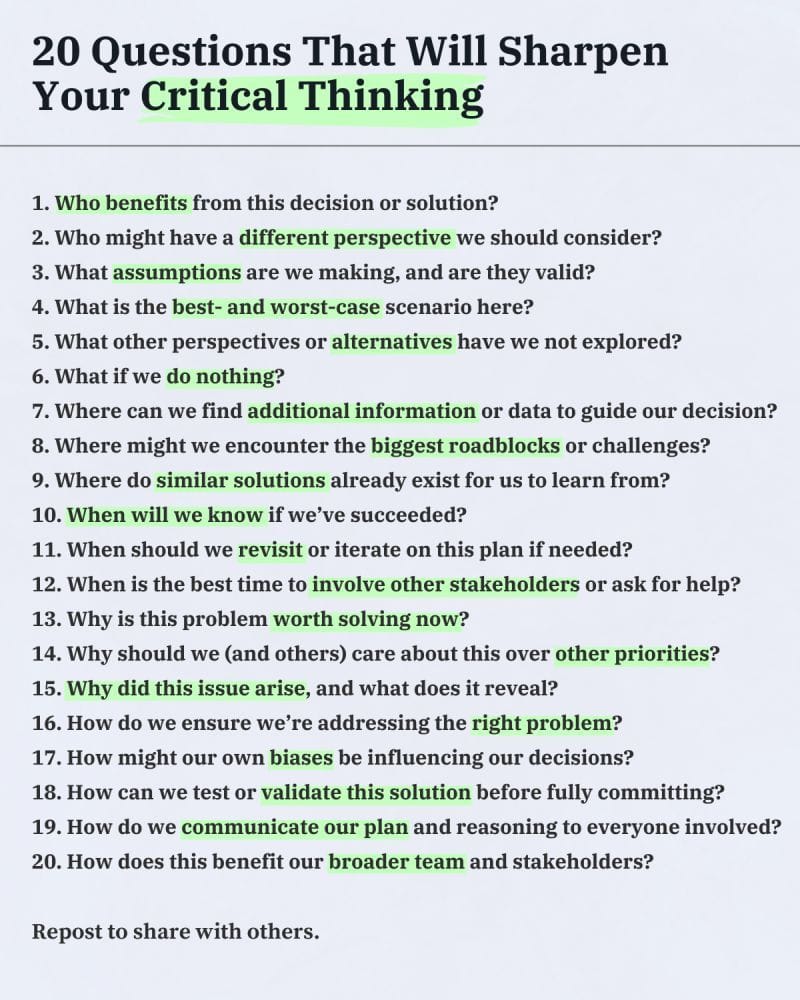"You (or your thinking) need to be more strategic."
Here are 7 actionable steps to help you address this TODAY:
(Prioritize #6 - others can't read your mind)
1. Seek Specific Examples
↳How: Approach the feedback with curiosity rather than defensiveness. Ask your manager or key stakeholders for specific instances where you could have been more strategic. Frame these conversations around seeking advice rather than just feedback. Mentors can also help here.
↳Why: Helps you focus your efforts on the appropriate next step(s).
2. Understand the Business Strategy
↳How: Dive deep into your company's strategy. This can be done through reviewing formal strategy documents, participating actively in strategy meetings, or having one-on-one discussions with key leaders.
↳Why: A deep understanding of the overall strategy will provide context for your actions and decisions. It also signals to others that you are ingesting the necessary inputs.
3. Link Your Work to the Strategy
↳How: Explicitly connect your current projects and initiatives with the broader business strategy. When communicating about your work, balance the focus between immediate outcomes and future implications.
↳Why: This showcases your long-term thinking and impact, beyond what is being delivered in the near-term.
4. Scale your Work
↳How: Identify ways to expand the impact of your work, either horizontally across different areas of the business or vertically by adding more value to functions you already serve.
↳Why: Scaling your work demonstrates a strategic mindset that thinks beyond the immediate scope.
5. Propose New Opportunities
↳How: Put forward new ideas for the organization, regardless if they may be immediately pursued or not.
↳Why: This shows initiative and a strategic approach to business growth.
6. Expose Your Thought Process
↳How: When in meetings or preparing documents, go beyond presenting results. Articulate the thinking behind your decisions and actions.
↳Why: This helps showcase your strategic thinking to others.
7. Communicate at the Right Altitude
↳How: Tailor your communication to your audience, especially when dealing with senior leaders. Start with the main message ('the punchline') and the first level of detail.
↳Why: This approach ensures that your communication is concise, focused and effective in strategically aligning with the interests and concerns of your audience.

